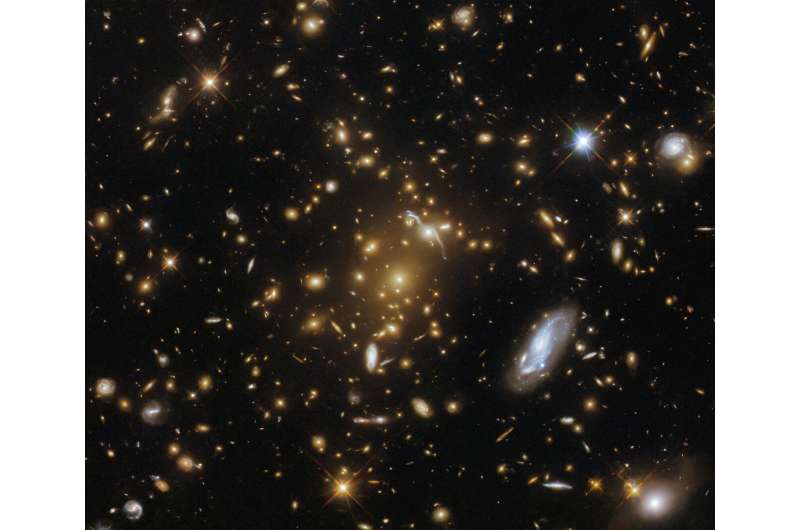This article has been reviewed according to Science X's editorial process and policies. Editors have highlighted the following attributes while ensuring the content's credibility:
fact-checked
trusted source
proofread
Hubble captures light-bending galaxy cluster eMACS J1823.1+7822

A vast galaxy cluster lurks in the center of this image from the NASA/ESA Hubble Space Telescope. Like a submerged sea monster causing waves on the surface, this cosmic leviathan can be identified by the distortions in spacetime around it. The cluster's enormous mass curves spacetime, creating a gravitational lens that bends the light from distant galaxies beyond the cluster. The contorted streaks and arcs of light we see in this image are the result. A host of other galaxies surrounds the cluster, and a handful of foreground stars with tell-tale diffraction spikes are scattered throughout the image.
This particular galaxy cluster, called eMACS J1823.1+7822, lies almost nine billion light-years away in the constellation Draco. It is one of five exceptionally massive galaxy clusters Hubble explored with the aim of measuring the strengths of these gravitational lenses, which would provide insights into the distribution of dark matter in galaxy clusters. Strong gravitational lenses like eMACS J1823.1+7822 can help astronomers study distant galaxies by acting as vast natural telescopes which magnify objects that would otherwise be too faint or distant to resolve.
This multiwavelength image layers data from eight different filters and two different instruments: Hubble's Advanced Camera for Surveys and Wide Field Camera 3. Both instruments can view astronomical objects in just a small slice of the electromagnetic spectrum using filters, which allow astronomers to image objects at precisely selected wavelengths. The combination of observations at different wavelengths lets astronomers develop a more complete picture of the structure, composition, and behavior of an object than visible light alone would reveal.
Provided by NASA



















